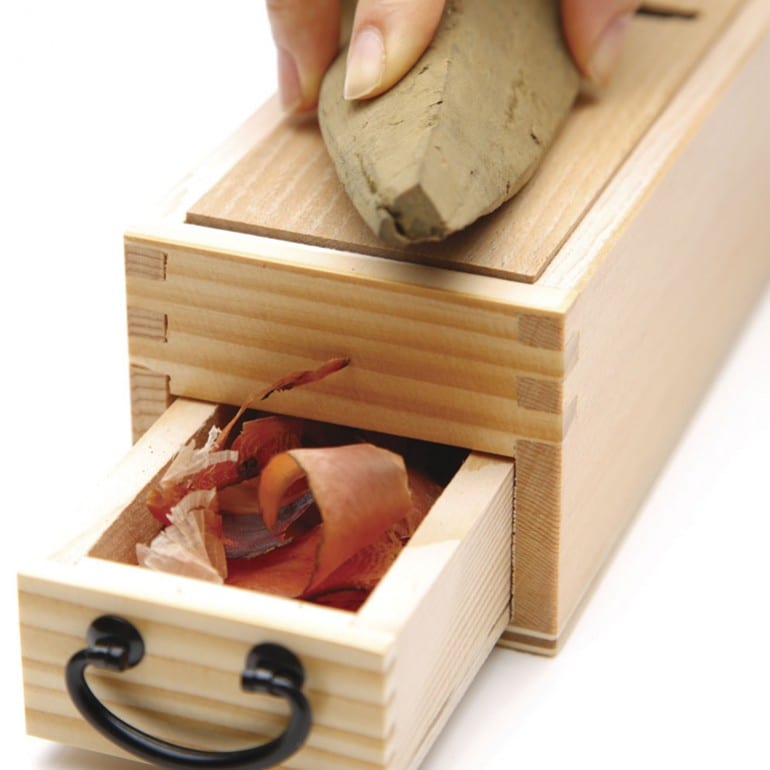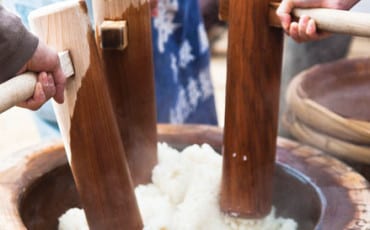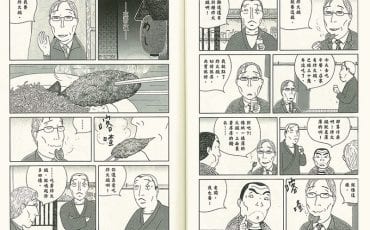- OISHII
- OISHII Wiki
- Tools
- Katsuobushi Kezuri
OISHII Wiki
Tools
Katsuobushi Kezuri
50 years ago, the katsuobushi kezuri, or dried bonito shaver, was a Japanese household staple. What’s changed since then?

You’re no stranger to bonito flakes — most commonly seen sprinkled atop dishes like grilled eggplant and okonomiyaki (Japanese pancake), the paper-thin bonito flakes, or katsuobushi, are beloved for their fascinating dancing motion, smoked bouquet, and unmistakable umami flavour. You’re probably also aware that bonito flakes are one of the main ingredients of dashi, the stock that is ubiquitously featured in Japanese cuisine. But did you know that in order to create the flakes in the first place, you’ll need a special tool known as katsuobushi kezuri?
To be fair, most of the bonito flakes we see “dancing” on our food today are created by machinery and sold in packets. Up until 50 years ago, however, practically every Japanese household would own a katsuobushi kezuri to shave the katsuobushi – which, in its pre-shaven form, is basically an extremely hard block of dried fermented bonito fillet. And, yes, there is a difference in taste between pre-shaven katsuobushi and freshly shaven katsuobushi.
How Katsuobushi Kezuri Works
The history of katsuobushi can be traced back to the early 8th century in Japan, where boiled bonito was sun-dried then shaved using a knife. It was much later in 1670 when the process of making katsuobushi was refined with the addition of mould, which preserves the quality of the fish for longer by further reducing its water and fat content. As a result, katsuobushi is nearly as hard as a rock. To shave it into paper-thin flakes, the katsuobushi kezuri was invented in the late Edo period (1603 – 1868).
Resembling a carpenter’s wood plane, the katsuobushi kezuri comes with a blade at the top of the wooden box as well as a drawer to catch the shavings. To shave the katsuobushi, simply move it against the blade. Depending on your preferred size of the shaving (larger, thicker shavings are used to make dashi), the blade can be adjusted, typically with the help of a wooden mallet.
While this traditional method of shaving katsuobushi is more troublesome than the modern shortcut way of simply using machinery, freshness is always guaranteed — once exposed to air, shaven katsuobushi tends to lose its umami flavour very quickly, hence it’s best to shave the fish only when you’re using it in your cooking, be it to prepare dashi or as a topping.
Unfortunately, with technological advancements and the proliferation of food machinery, the katsuobushi kezuri has more or less become a forgotten Japanese household tool today. The good news is, most reputable Japanese restaurants possess one in their kitchens, and you can even order it for yourself from online stores.
Care To Dance?
Don’t worry; the bonito flakes are not alive! It’s actually the heat waves emanating from the hot food that cause the paper-thin and light katsuobushi to move about, as if the flakes were dancing.
(Text TAN LILI)









